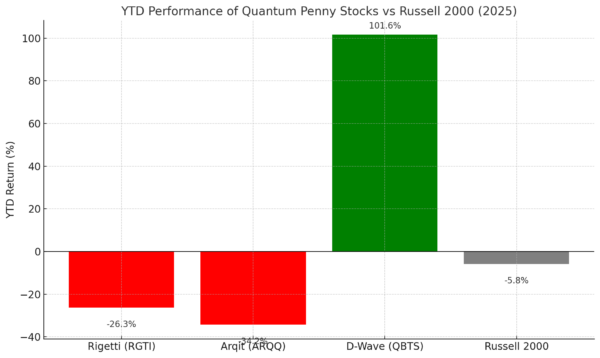The Not-So-Secret Driver Behind the Market Rally
It’s a good time to be an investor.
The U.S. stock market is trading at record highs.
After wiping out its losses from when it bottomed on March 23, the S&P 500 is now up almost 9% for the year.
Even after enduring a 50%-plus drawdown, the tech-heavy Nasdaq has gained 30% just this year.
Click here to watch Nicholas’ latest video update.
Investing in U.S. stocks seems to be the ultimate wealth plan in 2020.
Yet even the bulls will concede that the recent bull run is hardly typical.
And some have an ominous feeling the stock market isn’t quite as healthy as it seems.
Today, I want to look beyond the headlines and examine where the stock market is generating the most wealth for investors.
As it turns out, a handful of stocks are responsible for the bulk of the world’s stock market gains.
Now, that doesn’t mean you shouldn’t ride this trend and make as much money as you can.
But understand that no trend lasts forever.
As traders say, “The trend is your friend.”
Until, like all trends, it one day ends.
Popping the Market’s Hood
In a bull market, most stocks benefit from a rise in the overall market.
As they say, “A rising tide lifts all boats.”
That is not the case in the current bull market.
The performance of broad indexes like the S&P 500 and Nasdaq are deceptive. They obscure a market where certain stocks and sectors have soared even as most others remain underwater.
The biggest wealth generators have been U.S. tech stocks. And they have come to dominate the global stock markets like never before.
In the past, I’ve compared the various U.S. state economies to countries based on size.
Today, I can compare individual U.S. companies to entire national stock exchanges. And the comparisons are nothing short of remarkable.
The collective market capitalization of just four U.S. tech giants – Apple (Nasdaq: AAPL), Microsoft (Nasdaq: MSFT), Amazon (Nasdaq: AMZN) and Alphabet (Nasdaq: GOOG), Google’s parent company – is greater than the Japanese stock market, the third-largest economy in the world.
The market cap of Apple alone is now about equal to that of the Canadian stock market.
Amazon’s market cap alone is closing in on Germany’s entire market – the world’s fourth-largest economy.
Microsoft is equal to Switzerland. And Google is another Taiwan.
Meanwhile, the average S&P 500 stock is still 28.4% below its pre-pandemic peak.
Market historians point out that it’s distortions like these that signal market tops.
I expect we’ll look back on this era in tech stocks in much the same way.
Is the Glass Half-Full…
Bulls argue that the gains in tech stocks reflect genuine secular tailwinds. The world has gone online. And tech companies matter far more than traditional brick-and-mortar companies do.
And although tech stocks are partying, valuations are nowhere near the highs of the 2000 dot-com bubble.
Besides, the money printing of central banks has distorted the usual valuation metrics in financial markets.
A combined monetary boost of well over $5 trillion from governments across the globe in the past five months has added monetary and fiscal fuel to the stock market fire.
Or Half-Empty?
Pockets of irrational exuberance abound in financial markets.
Just consider the valuation of Tesla (Nasdaq: TSLA), the poster child of the current bout of market mania.
Viewing Tesla through the conventional valuation measures has made Elon Musk’s venture Wall Street smart money’s favorite short.
Yet that bet against the anointed wunderkind has cost this same smart money billions.
As long-suffering permabear James Montier of GMO puts it, “The U.S. stock market appears to be absurd.”
Whatever the Question, Technology Is the Answer
One of the first rules of trading is to never argue with the market.
Macro investors will also admonish “Don’t fight the Fed.”
Conventional wisdom has it that money printing is responsible for the U.S. tech bubble.
But here’s what doesn’t add up with that analysis.
If central bank and government stimulus alone drove financial markets, you would expect stock markets to rally across the board.
Yet that has not been the case.
Take the example of Europe and Japan. Central banks have been buying up local stocks and bonds over the past decade.
Yet the MSCI Europe Index has generated 94.5% over the last 10 years. That compares with 311% from the S&P 500. This year, the Stoxx Europe 600 is down 11%. Japan’s Topix has fallen 4%. Meanwhile, both the S&P 500 and China’s CSI 300 are solidly up.
The source of this outperformance is no mystery.
Giant tech stocks dominate both the S&P 500 and China’s CSI 300.
The U.K. and Europe don’t have much in the technology sector to compete with the U.S. and Chinese giants.
Government stimulus or not, the tech sector has been the driving force behind the U.S. stock market rally.
I remain long U.S. tech stocks in my portfolio. But I am watching carefully for when this party will end.
My primary focus is to make sure I have a seat when the music stops.
About Nicholas Vardy
An accomplished investment advisor and widely recognized expert on quantitative investing, global investing and exchange-traded funds, Nicholas has been a regular commentator on CNN International and Fox Business Network. He has also been cited in The Wall Street Journal, Financial Times, Newsweek, Fox Business News, CBS, MarketWatch, Yahoo Finance and MSN Money Central. Nicholas holds a bachelor’s and a master’s from Stanford University and a J.D. from Harvard Law School. It’s no wonder his groundbreaking content is published regularly in the free daily e-letter Liberty Through Wealth.







